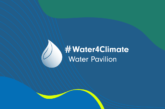The Indian states with the highest fertility rates also have the lowest socioeconomic indicators. As India’s population crossed 1390 million population as of July 2021 and the global population of 7.9 billion and projected to be 9.74 billion by 2050 the world is now facing the impacts of population growth and its interlinked relationships to the environment, economy and climate trends.

On the contrary the global population is also expected to dip by a further 2 billion from earlier United Nations Population Division estimates, research led by the University of Washington and published in medical journal The Lancet suggests. Surprisingly the current fertility rate for India in 2021 is 2.179 births per woman, a 0.95% decline from 2020. As per UNESCAP’s SDG Progress report the progress in the South Asia Region on SDG realization and achieving the 2030 Agenda is very slow or stagnant on half of the goals however the Southern Asia population is equivalent to 24.89% of the total world population. As modern innovations, medical care and industrialization became more accessible and reliable human population witnessed exponential growth.
Though the government has taken some strict actions to promote mass movement against population growth by substantially increasing access to contraceptives and family planning services but the extreme decisions like the infamous mass sterilization drive of 1976, lasting for the 21-month period known as the “Emergency, under which around 2.6 million men were sterilized in India and the recently launched scheme on World Population Day when Uttar Pradesh State’s Law Commission released the first draft of the proposed ‘UP Population Bill, 2021’ is unwarranted.Although political will is very important to enforce measures for managing population growth, however, the approach should not be political. To ensure trust among the citizens and to pursue them to take actions and bring around the community we need a social movement and programs backed by an efficient, long term and accessible family planning plan to benefit the state in the long term and to incorporate a sense of social security among the population.
There is a need for a national-level action plan to curb the population outbreak, to have a data-driven and community-centric approach for strengthening existing programs, upcoming new bills, and new strategies for policy intervention. Though the population control plans and schemes are necessary, the right approach is very important, educating and empowering women on these issues and generating awareness among men should be the first step. There should be aid support for family planning such as contraceptives accessible to citizens with awareness programs to change perspective of ethnic groups to encourage the use of contraceptives. Quality education is a key component to achieve sustainable development, thus educating young population on reproduction and population management is very crucial for equally distributing resources among population for alleviating poverty and provide community with better living conditions and social security. It should come as an inner call for the citizens like they have turned water and environment conservation into a public movement similarly population control should be taken up by citizens and turned into a public movement.This requires the support of NGOs and grassroots level organizations for spreading awareness and overcome the social norms of religious groups. The right way for implementing population policy is to have a bottom-up approach, with engaging organizations and resource persons for community engagement for the effective outcomes.
Population growth imposes an increasing burden on the world’s limited and continually depleting natural resources, as they are under increasing strain. The expanding population and growing resource demand have already sprung the rapid expansion of energy production and escalated consumption across the globe. The rising level of consumption has accelerated the impacts of environmental effects like contamination of groundwater and surface water along with air pollution, soil exhaustion, deforestation, and enhanced greenhouse effect resulting in global warming. With population increase, we demand more energy, food, and water from fewer resources along with growing poverty levels, this leads to unequal distribution of resources and opportunities causing conflict and unsustainable resource management. “So, is it time for all countries to turn to drastic population control in order to sustain life on Earth, or is it a violation of human rights, no matter what?”



